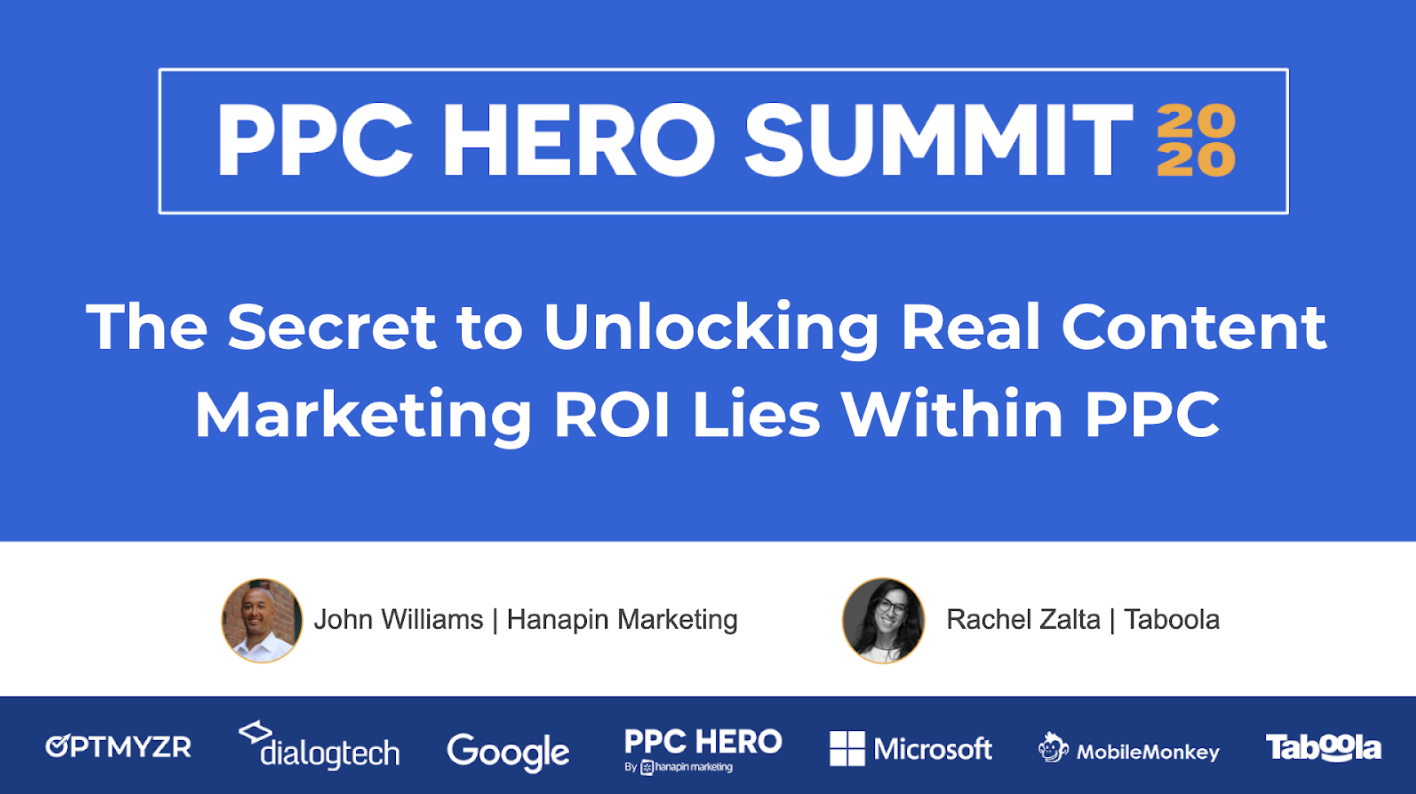In a world where just about anyone can be a content creator, and the human attention span is lower than that of a goldfish, how can you elevate your paid media strategy with the most successful and effective content?
In an upcoming webinar for the 2020 PPC Hero Summit, that’s exactly what myself and John Williams of Hanapin are setting out to share.

The Pros and Cons of Content
One thing all marketers can agree on is the importance of a good piece of content, but it’s important to unpack the potential of a piece of content in order to best understand how to make it work for you.
When a person is consuming a piece of content, they’re not in “decision making mode,” which means they haven’t necessarily come there to purchase a product or service. They’re in content-consumption mode, and there are advantages to capturing their attention while they’re in this mindset.
With a piece of content, you’re able to cast a wide net and reach a large audience, much larger than if you only focused on people who are ready to purchase.
And if you pre-qualify your audience correctly, you’ll end up with a captive audience for your pitch and have a real opportunity to move those potential customers down the funnel.
Content Marketing for all Stages of the Funnel
It’s a common misconception that content is only effective for the awareness stage of the funnel.
Is it effective there? Very.
Is that the only place content can drive results and KPIs? Not even close.
Understanding the different ways content can be used in each stage of the funnel is crucial in making it successful every step of the way.
For Awareness
As mentioned above, content is an excellent tool for the awareness stage. It’s a chance to qualify your audience while simultaneously offering a piece of content with broad appeal.
As long as the content is in some way related to your product, you have a lot of room here to create something genuinely interesting, thought-provoking, and something that will give people a chance to get to know your brand.
Here, you aren’t selling a product, but rather you’re telling a story, and simultaneously preparing people to enter the next step of your funnel.
For Consideration
Creating content for the consideration stage of the funnel is about staying directly related to your product’s value proposition and getting creative with the way you capture leads.
Here, you get a chance to be more specific, and to highlight the problem your product solves.
Do you create socks that don’t slip inside of sneakers?
Do you have an online furniture website good enough to face off against long-standing in-person retailers?
Content created for the consideration stage is the perfect place to shout that out, and then make the leap to try and capture leads the right way.
We’ve found that the most successful methods to capture leads give readers or potential customers something of high value in return.
This can come in the form of a fun, interactive quiz where, in order to get their results, the quiz participant gives you their email address. This can also be, as you likely see quite often, the exchange of an email address for a discount count.
For the Purchasing Decision
Next up in the funnel comes the time where a consumer makes the decision to purchase. Successful content strategy for this stage hinges on a few key factors.
The first is getting specific––stay directly related to your product and keep headlines specific. Examples include “Shop the best at-home gym equipment” and “Upgrade your cookware with 20% off.”
The second is to leverage retargeting. When you have a consumer right on the edge of making a purchasing decision with you, you don’t want to lose them simply because they’ve forgotten they were interested. Supplement your campaigns with a robust retargeting strategy to make sure users remember to return.
At the end of the day…
Purchase decisions take time. It shouldn’t come as a surprise that the higher the price point of a product, the longer it takes for a purchase decision to be made, so have patience and remember that content is an asset in educating potential customers, getting them to consider you, and ultimately becoming a loyal customer.
In our webinar, John talks about just how important paid media really is, and the role that quality content plays in it. He delves into how PPC promotes content to the right person at the right time, and explains the importance of knowing your customer, getting timing right, and considering the location of your placements.
John and I agree on a lot of the topics we’ll be covering in our webinar, but none more than this: content truly is king.
Join us on February 12th for the 2020 PPC Hero Summit (it’s free!) here to see our findings in action and to ask us questions in real time. See you there!